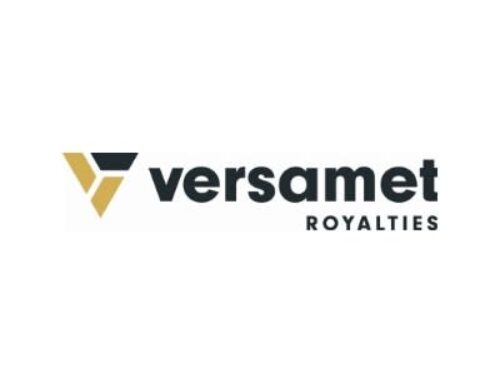Billions of Legacy Fund dollars are shielded from public disclosure, considered confidenti
November 17, 2025
BISMARCK — Details about billions of dollars held by the North Dakota Legacy Fund remain secret because officials refuse to disclose certain investments on the grounds that it would mean divulging money managers’ confidential information.
The position to not disclose details about how money managers are investing the public funds has drawn intense criticism from those who say taxpayers are entitled to know how that money is being invested.
North Dakota’s Legacy Fund was created by a constitutional amendment approved by voters in 2010. Thirty percent of the taxes on petroleum produced and extracted in North Dakota are transferred to the Legacy Fund monthly. The fund is meant to be a perpetual source of revenue from the state’s finite resources of oil and natural gas.
Calls for greater transparency of Legacy Fund investments prompted a pending attorney general’s opinion and resulted in a new law to create a website to provide more information about the state’s $13 billion strategic investment fund.
“Where tax dollars go should be open to the public,” said Tory Jackson, a Bismarck lawyer who filed an open records request with the North Dakota State Investment Board in January of 2024 seeking information about where the fund’s money managers were investing the money.
In response to his records request, State Investment Board staff provided lists of investments, but no details about how those investments were allocated.
The investments that have been shielded from public view are in pooled or “commingled” funds. The Legacy Fund has 11 investments valued at $3.2 billion in commingled funds, according to Sarah Mudder, communications and outreach director for the Retirement and Investment Office, the staff arm of the State Investment Board.
“These are not ‘Hidden Dollar’ investments,” she wrote in an email.
During legislative discussions about the need for a website to provide more public information, attention centered on millions of dollars of global investments, which have been a focus of concern, especially investments in countries like China and Russia.
In providing information to Jackson, the Retirement and Investment Office provided only categorical information. In his request for a legal opinion, Jackson wrote Attorney General Drew Wrigley to complain about the lack of transparency in a lengthy list of investments he was given.
“The list includes over $160 million invested in the ‘Emerging Markets Region,’ over $520 million in the ‘Global Region,’ and nearly $46 million in the ‘International Region,’ ” Jackson wrote to Wrigley in February of 2024.
“Those categories are not responsive to my request for a breakdown of investments by country (notwithstanding that a description of the entire globe as a ‘region’ is nonsensical),” he wrote.
The examples Jackson cited were among $3.1 billion in 24 international or global funds for which he was unable to obtain a breakdown of the investments.
Although some investment funds “very well might describe themselves in such broad terms,” the investment office “most certainly should be able to obtain the actual individual investments made through those funds and share that information with the public when requested,” Jackson wrote.
In his records request, Jackson asked for the current list of all foreign and domestic holdings in the Legacy Fund, listed in alphabetical order by country. He also asked for the current list of all foreign and domestic investments in the Legacy Fund sorted by each asset or money manager.
Finally, Jackson also asked for the current amount of Legacy Fund money distributed by the money manager handling in-state investments in five companies or investment managers.
Jackson disagrees with the Retirement and Investment Office position that information he requested was “commercial information” or “financial information” that is exempt from open records requirements.
In denying disclosure of that information, investment officials told Jackson that to provide a breakdown of funds invested with money managers would violate the open records exemption barring release of confidential business or financial information.
“If the RIO is relying on a speculative competitive injury to the private money managers, they should at least provide an analysis, rather than a mere citation to the statute with no meaningful explanation,” Jackson wrote to Wrigley. “Perhaps the RIO’s denial of my request is a tacit admission that the RIO does not actually receive information from its money managers regarding specific investments, which raises serious questions about the RIO’s stewardship of taxpayer money.”
Suzie Weigel, a Wrigley assistant, said the attorney general’s opinion requested by Jackson is in the “final process,” but gave no further explanation.
In testifying on legislation to create the Legacy Fund investment website, state investment officials objected to portions of the bill that would require disclosure of a “fund, derivative, or other financial mechanism aggregated across managers where the underlying holdings are available and not part of an indirect fund” such as commingled or index funds that the officials said are “proprietary information” because they would reveal the fund’s investment strategies.
“Investment managers and financial institutions routinely include confidentiality provisions in their agreements with institutional investors” like the State Investment Board, Scott Anderson, the Retirement and Investment Office’s chief investment officer, and Jodi Smith, then interim executive director, said in written testimony.
After the bill was amended, investment officials gave their support and it passed and was signed into law. “The website must list all companies, funds, and other financial mechanisms in which the Legacy Fund is invested in accordance with state and federal laws,” according to the new law.
Smith acknowledged that the law for the new website likely would not require the Retirement and Investment Office to disclose the specific information about “commingled funds” that Jackson and others have sought.
Disclosure of that information would hamper the Legacy Fund’s ability to “negotiate or even prevent it from being invited to invest in certain opportunities,” Mudder said.
Pooled or commingled funds have certain advantages over many investments that are more transparent, including better returns, Mudder said. “It’s a more affordable tool for us to invest in,” she said.
Still, when practical, the investment office is moving toward allocating more of its investments into what are called separately managed accounts, she said. Those investments are not commingled, but come with requirements, including minimum account sizes.
To guide international investments, the State Investment Board uses a benchmark index including more than 6,000 securities, giving the Legacy Fund a diversified portfolio, Mudder said.
Because the investment office lacks the resources to monitor all 6,000 securities, it relies on the U.S. Department of Treasury’s Office of Foreign Asset Control, she said. If any company is sanctioned by that office, it is removed from the index and the State Investment Board’s portfolio.
Wrigley’s legal opinion, once issued, will provide important clarity that will help guide the creation of the new Legacy Fund website, Smith said. If directed by Wrigley to disclose the kind of information Jackson requested, the investment office will comply.
“We do not believe the law allows us to share that level of information,” she said. The website is being modeled on one for
Norway’s $1.4 trillion sovereign wealth fund
, which has a searchable online database allowing viewers to see the total of each investment and the name of the investment.
Clicking on a country on a map will show the total investments in that country.
The estimated cost of creating the Legacy Fund website and its first year of implementation ranges from $250,000 to $500,000. A request for proposals is being drafted, and officials hope to have the website in operation next year, Smith said.
Search
RECENT PRESS RELEASES
Related Post



